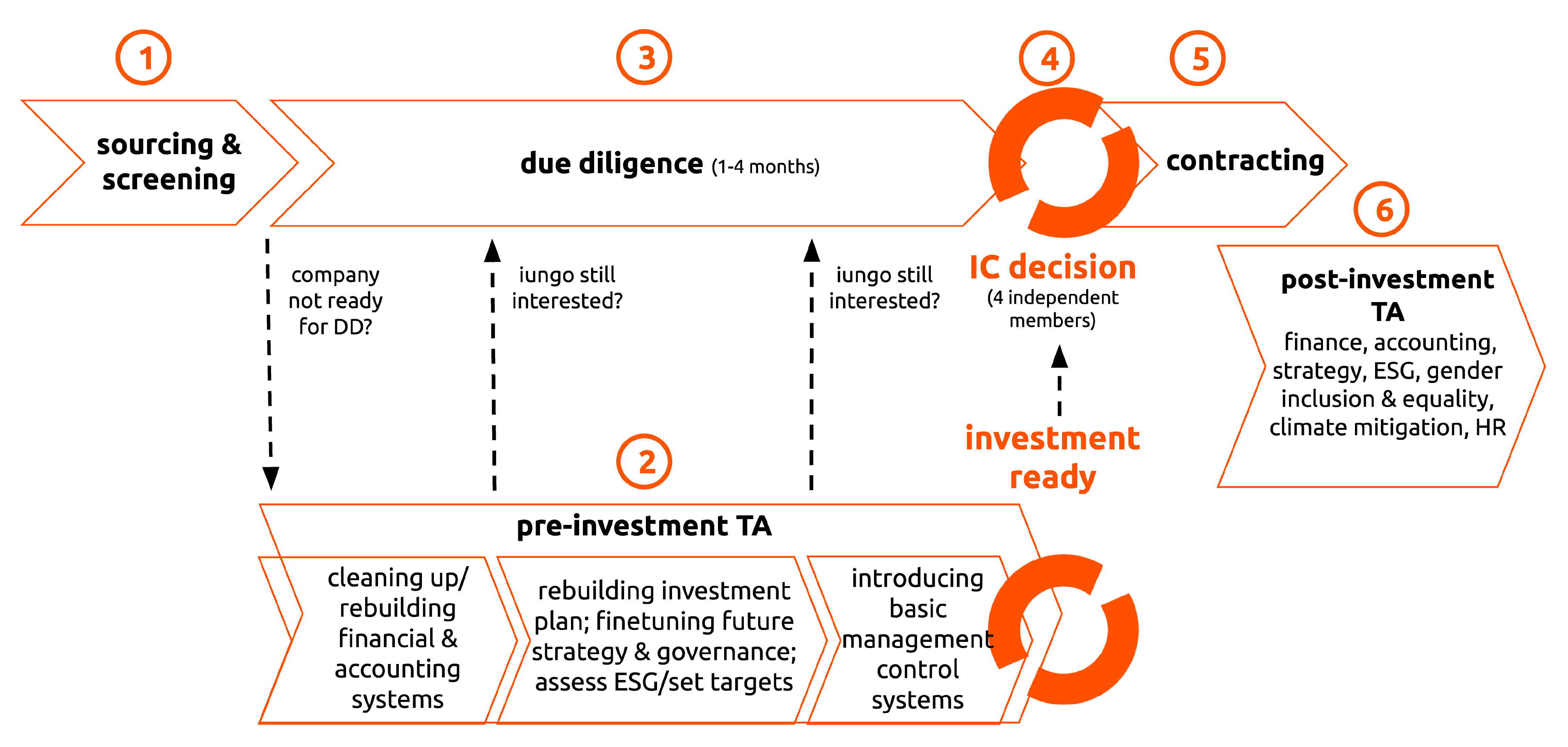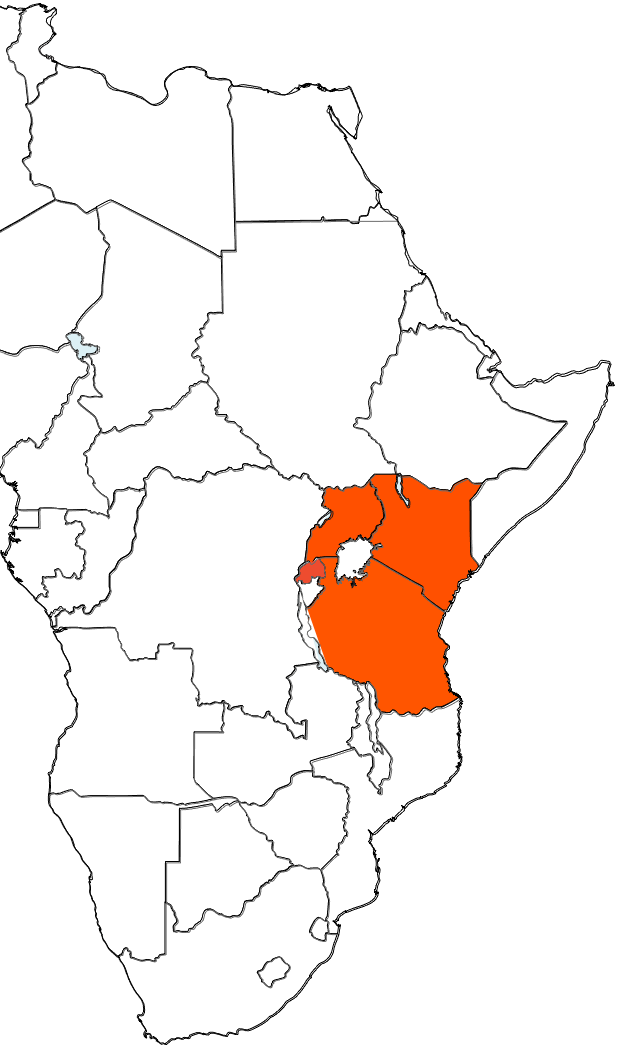our process

- screening is based on return expectations, risk appetite, and our impact verticals. The latter means we also analyze potential investments through a gender lens; this can include assessing the gender composition of the company’s leadership, workforce, and supply chain, as well as examining the company’s respective policies.
- a majority of the small SMEs we work with are not due diligence ready: we first (re)build the necessary information. Then we assess the alignment on strategic objectives – including from an ESG point of view, based on IFC’s Performance Standards. Finally, we make sure the company is set for receiving additional liquidity. At any point, iungo capital can decide to discontinue the pre-investment TA process. We see the pre-investment TA commitment as an indication of the company’s behavior post-investment.
- in parallel with the pre-investment TA process, due diligence is executed based on the newly provided information, focusing on operational, financial, legal, and impact areas.
- our IC consists of 4 independent members, the majority of whom are based on the ground, close to and familiar with the reality of our target SMEs.
- contracts hold several tranches with milestones for disbursements, including ESG targets. The co-investing business angels are party to one and the same contract.
- post-investment, TA support continues, with core emphasis on finance & accounting – with designated iungo portfolio accounting staff – ESG and impact targets.
our impact
1. financial inclusion
the concept of the “missing middle” originally referred to the financing gap between microfinance and traditional financing, but covered, in our opinion, a too wide spectrum of SMEs needing between USD 50k all the way up to USD 2M. With iungo capital, we focus on the most underrepresented segment, that needs less than USD 500k, an investment too small for most other impact investment funds, or that doesn’t have enough collateral to approach local banks.
2. jobs and revenue growth
the East African labor market has been struggling to absorb the ever increasing number of young job seekers – 70% of the population in East Africa is younger than 24. Small SMEs create new jobs quicker than larger firms, as they lack economies of scale. So when small SMEs continue growing after a capital injection, they have to hire more people to sustain that growth and consequently generate much needed employment opportunities.
3. gender equality and inclusion
as we target the biggest market of SMEs with unmet financial needs, our segment also holds the highest number of businesses that are founded/led by women, have women as workforce, or produce for/deliver a service to women. Additionally, we leverage our investments to proactively promote gender equality and inclusion in the workplace. Click here for our gender commitment statement.
4. climate mitigation
while it is true that (East) African countries may not be the largest contributors to global greenhouse gas emissions, we focus on implementing climate mitigation strategies within our portfolio as they lead to direct cost savings through reduced energy bills, improved resource efficiency, and/or decreased waste management expenses.
our target market

iungo capital focuses exclusively on the growth of small SMEs (IFC working definition) in East Africa – Uganda, Kenya, Tanzania, and Rwanda – especially in labor intensive sectors, without any specific sector focus, to create the necessary employment opportunities,for women included, not only at investee level, but also upstream their value chains.
a 2020 study by Omidyar characterizes our segment as “dynamic enterprises”: they operate in established “bread and butter” industries […] their rate of growth is typically moderate […] multigenerational family businesses are a common archetype of this segment […] they are often the backbone of local economies and important sources of jobs for low- and moderate-skilled workers, especially given their labor intensive nature”.
